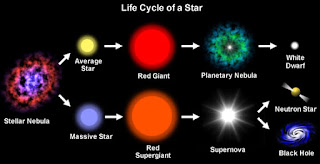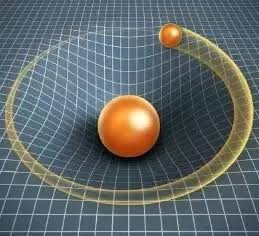TRACING OUT THE HISTORY OF UNIVERSE, EARTH AND LIFE— PART 2
EVOLUTION
Conventional religious literature tells us about the theory of special creation. This theory has three connotations. One, that all living organisms (species or types) that we see today were created as such. Two, that the diversity was always the same since creation and will be the same in future also. Three, that earth is about 4000 years old. All these ideas were strongly challenged during the nineteenth century.
made during a sea voyage in a sail ship called H.M.S. Beagle round the
world, Charles Darwin concluded that existing living forms share
similarities to varying degrees not only among themselves but also with
life forms that existed millions of years ago. Many such life forms do not
exist any more. There had been extinctions of different life forms in the
years gone by just as new forms of life arose at different periods of history
of earth. There has been gradual evolution of life forms.
What Came First The Hen Or The Egg?
Neither hen or egg, it was RNA that came first. RNA world theory suggests that first self replicating life molecule was a RNA. RNA genome in many plant viruses and the catalytic ability of RNA support this theory. Viroids and pathogens for plants made up of only circular RNA support the RNA world theory.
How The Evolution Can Be Seen Through The Recapitulation Theory?
If you observe human embryo development you may find many stages which are similar to stages of evolutionary development of vertebrates (Fishes, Frog, Reptiles, Bird and Mammals)
This similarity is clearly evident that life evolved gradually from common ancestors.
What Are Evidences Of Evolution?
Fossils provide best evidences of evolution. Fossils are remains of hard parts of life forms found in rocks and a cross-section of Earth's crust indicates the arrangement of sediments one over the other during long history of Earth. Different-aged Rock sediments contain fossils of different life forms.
over time and certain life forms are restricted to certain geological time-
spans. Hence, new forms of life have arisen at different times in the history
of earth. All this is called paleontological evidence.
Missing Links In Evolution?
Fossil record contains some missing links, one such missing link is archaeopteryx, a transitional Fossil between birds and reptiles.
Reptilian Character
1. Body axis is lizard like.
2. Bones are not pneumatic bones.
3. A long tail is present.
Avian Character
1. Presence of Feather.
2. Jaw modified into beak.
3. A long tail is present.
 |
| ARCHAEOPTERYX LITHOGRAPHICA (TIME: LATE JURASSIC) |
C, H, O, N, P and S are basic building blocks of all life forms on Earth.
Phosphorus is structural component of DNA, RNA, ATP, some proteins, bone, cartilage and a number of enzymes, hence it is essential for life.
A bacteria, GFAJ-1, which lives in California's mono lake use arsenic in backbone of DNA. If a life form on earth can use such altered biochemistry fullstop what else can life do in outer space that we haven't seen yet!
How We And Monkey Share Common Ancestry?
• Similar genetic code.
• DNA is genetic material in all living beings.
• Similar biochemical processes in all living beings.
• From bacteria to plant to animals all use ATP to perform life processes.
• Homology in haemoglobin of different vertebrates.
These all evidences shows common ancestry of all life forms on earth, they might have possibly reached to Earth from outer space or might have evolved somewhere in space which has not come into our knowledge yet, but you can discover this among twinkling stars some day........
Evolution Of Primates
About 15 million years ago, primates called Dryopithecus and Ramapithecus were
existing. They were hairy and walked like gorillas and chimpanzees.
Ramapithecus was more man-like while Dryopithecus was more ape-like. Few fossils of man-like bones have been discovered in Ethiopia
and Tanzania (Figure 7.11). These revealed hominid features leading to
the belief that about 3-4 million years ago, man-like primates walked in eastern Africa. They were probably not taller than 4 feet but walked up right. Two million years ago, Australopithecines probably lived in East African grasslands. Evidence
shows they hunted with stone weapons but essentially ate fruit. Some of the bones among the bones discovered were different. This creature was called the first human-like being the hominid and was called Homo habilis.
The brain capacities were between 650-800cc. They probably did not eat
meat. Fossils discovered in Java in 1891 revealed the next stage, i.e., Homo
erectus about 1.5 million years ago. Homo erectus had a large brain around 900cc.
Homo erectus probably ate meat. The Neanderthal man with a brain size
of 1400cc lived in near east and central Asia between 1,00,000-40,000
years back. They used hides to protect their body and buried their dead.
Homo sapiens arose in Africa and moved across continents and developed
into distinct races. During ice age between 75,000-10,000 years ago
modern Homo sapiens arose. Pre-historic cave art developed about
18,000 years ago. One such cave paintings by Pre-historic humans can
be seen at Bhimbetka rock shelter in Raisen district of Madhya Pradesh.
Agriculture came around 10,000 years back and human settlements
started. The rest of what happened is part of human history of growth
and decline of civilisations.
Within class mammalia common human beings belong to order primate, a group that originated about 65 million years ago and it includes monkey and apes also.
Methods to improve your speed: Click here
Learn all about SPACEX:











Comments
Post a Comment